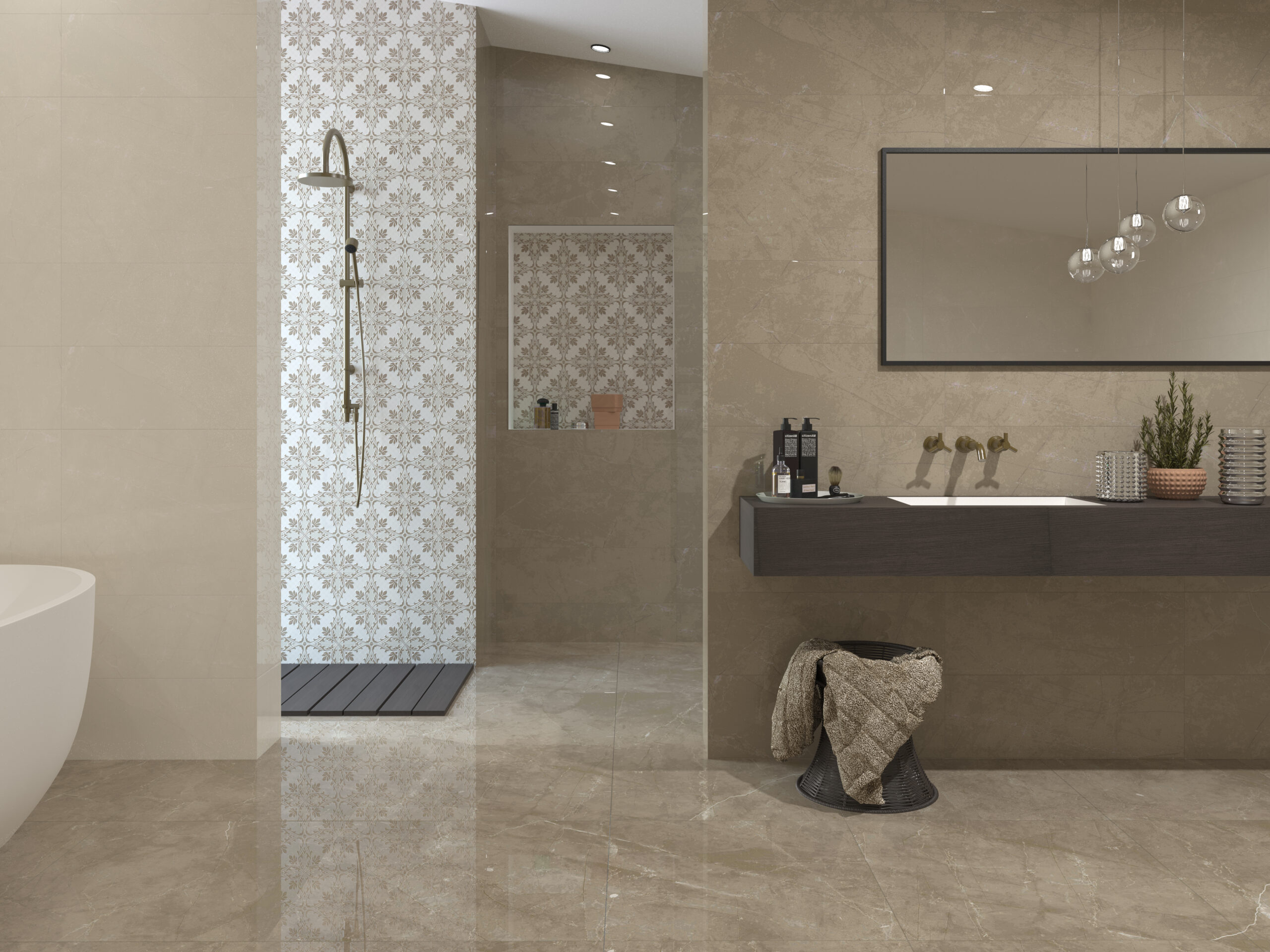
Tiling is a skill that requires mastery of the fundamentals, but what sets a professional tiler apart is their ability to go beyond the basics. This blog post will explore some expert techniques and provide valuable insights that can take your tiling projects to the next level.
Perfecting the Tile Layout
For seasoned tilers, the art of achieving a symmetrical and visually pleasing tile layout goes beyond simple placement. Meticulous planning is critical, and here are some tips to calculate tile placement effectively:
- Borders: Consider the space’s edges and how tiles will meet them. Planning for consistent boundaries ensures a cohesive look.
- Centerlines: Identify the centre of the space and use it as a reference point for laying tiles. This creates balance and symmetry in the layout.
- Focal Points: Determine focal points within the area and adjust the tile layout to enhance these features. This strategic approach adds visual interest.
Cutting Intricate Patterns
Proficient tilers understand the importance of precise cuts, especially when dealing with corners, edges, or intricate designs. Here are some tips and techniques for achieving accuracy:
- Precision Tools: Invest in quality cutting tools, such as wet saws or angle grinders, with diamond blades for clean cuts.
- Mosaic and Glass Tiles: When working with challenging materials like mosaic or glass tiles, use a straight edge or template for guided cutting, ensuring intricate patterns are flawlessly executed.
Handling Difficult Materials
Tilers often encounter various materials, each requiring specific handling. Here are insights into managing different tile types:
- Natural Stone: Ensure proper substrate preparation, including suitable underlayment, to support the weight of natural stone tiles.
- Large-Format Tiles: Use a suitable adhesive for large-format tiles to prevent sagging during installation. Employing levelling systems helps achieve a seamless surface.
Mitigating Lippage
Lippage, or uneven tile surfaces, can diminish the final result. Mitigate this issue with these techniques:
- Tile Levelling Systems: Incorporate tile levelling systems during installation to ensure even surfaces, especially with large-format or rectified-edge tiles.
- Proper Adhesive Application: Apply adhesive evenly and use the correct trowel size to prevent variations in tile height.
Advanced Grouting and Sealing
The final steps of grouting and sealing require finesse. Enhance your skills with these techniques:
- Matching Grout Colours: Achieve a seamless look by choosing grout colours that complement or match the tiles. This creates a cohesive appearance.
- Smooth Finishes: Master the art of grout application for smooth, even finishes. Use grout floats and sponges to create professional-looking surfaces.
Incorporating Decorative Elements
Elevate your tiling projects with decorative elements. Explore these ideas:
- Eye-Catching Borders: Create visually stunning borders using contrasting tiles or patterns to add a touch of sophistication.
- Medallions and Mosaics: Integrate medallions or mosaic designs for a unique focal point. Precision cutting and layout planning are crucial for these intricate elements.
Problem Solving on the Fly
Every project presents challenges, and expert tilers excel at creative problem-solving. Here are some insights:
- Unexpected Substrate Issues: Address unexpected substrate problems by assessing and reinforcing the substrate before tile installation.
- Tile Damage: For damaged tiles, have a contingency plan to replace and match them seamlessly.
- Design Modifications: Be adaptable to design modifications, ensuring a smooth transition without compromising the overall aesthetic.
Staying Up-to-Date
To excel in the ever-evolving tiling industry, staying informed is vital. Consider these strategies:
- Industry Advancements: Keep abreast of new materials, tools, and techniques to stay at the forefront of the industry.
- Continuous Learning: Attend workshops, seminars, and training sessions to expand your knowledge and continually enhance your teaching expertise.
In conclusion, mastering advanced tiling techniques involves a comprehensive understanding of layouts, cutting precision, material handling, lippage mitigation, grouting finesse, decorative integration, problem-solving skills, and staying informed about industry advancements. By incorporating these expert insights into your projects, you can achieve outstanding results that set you apart as a professional tiler. Stay tuned for more case studies and expert insights from Quantum Group NI, and see our full range of high-quality tiling and wet room products on our website.

